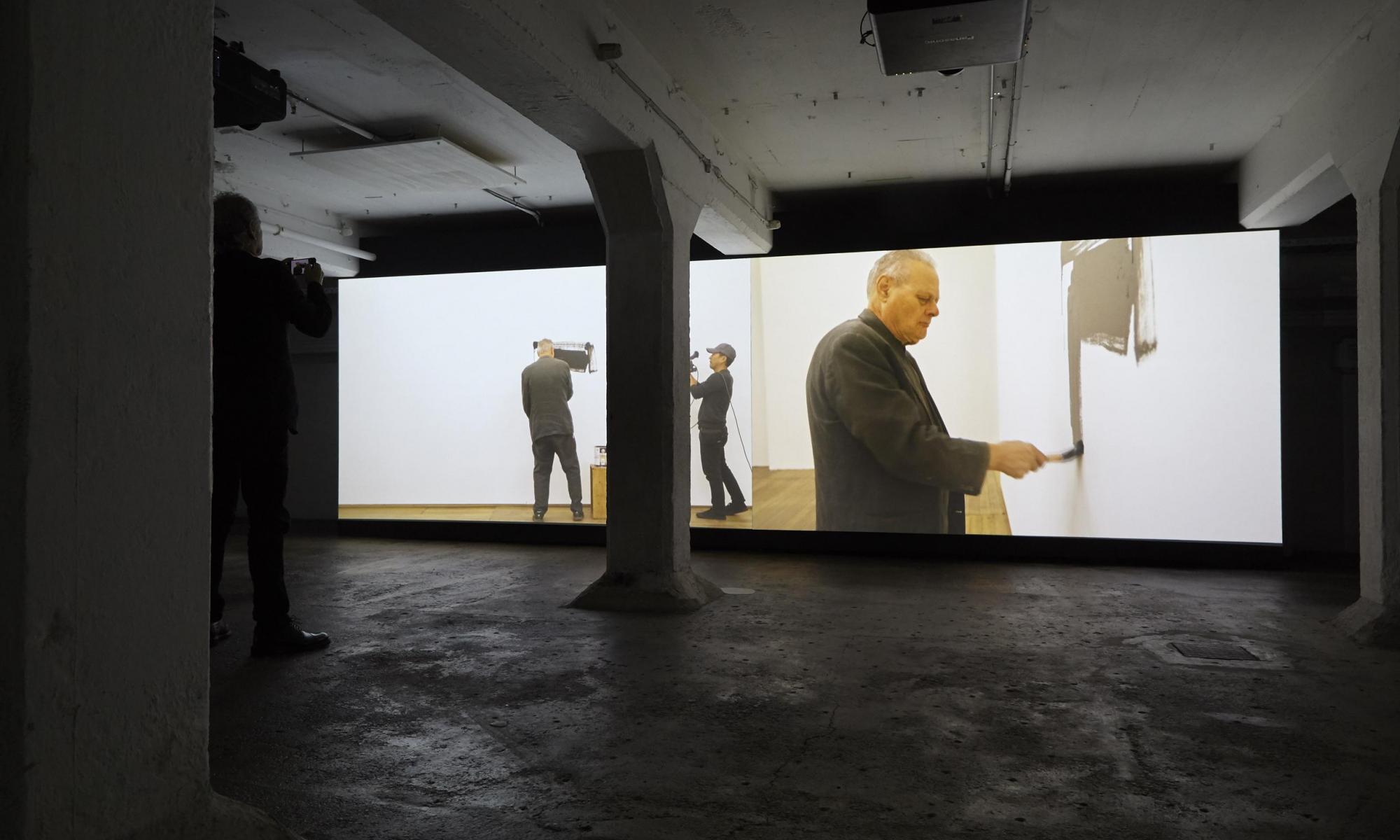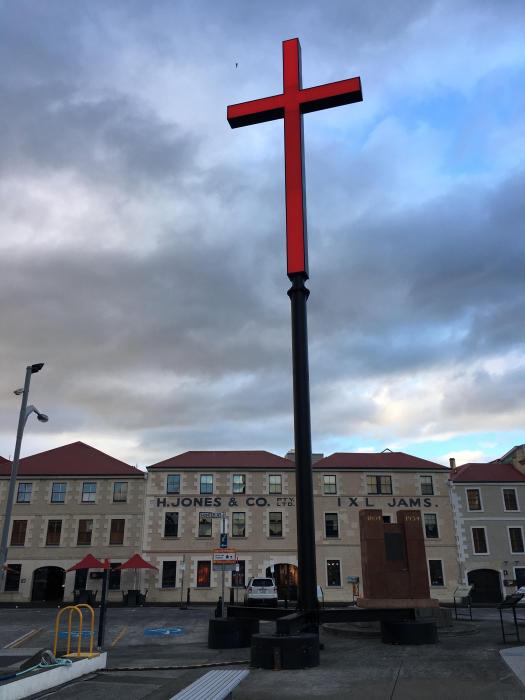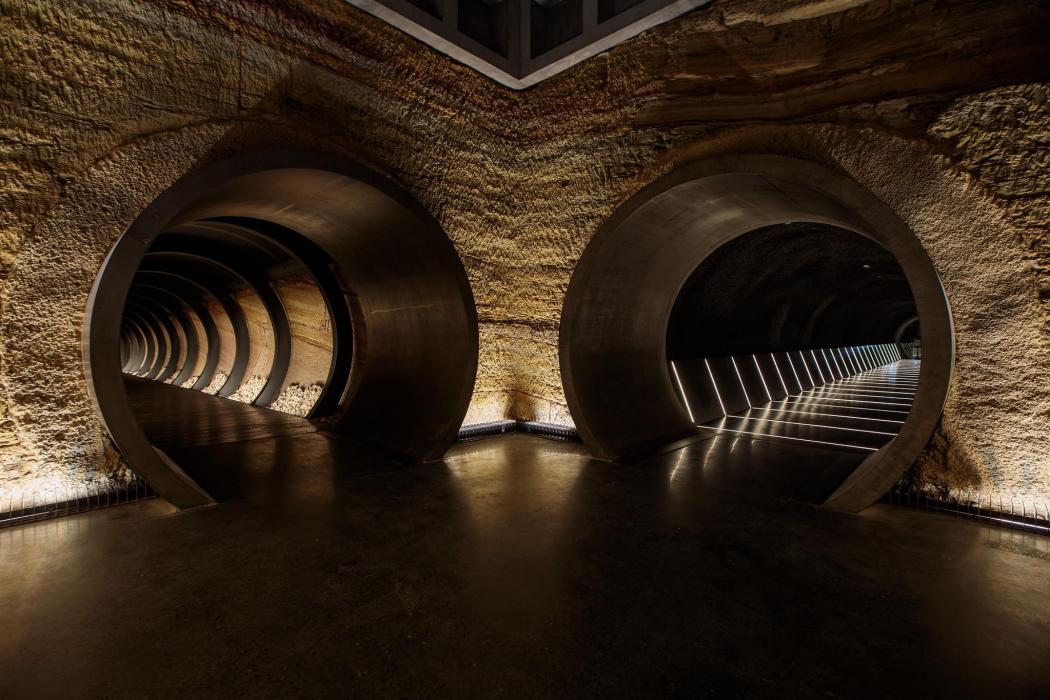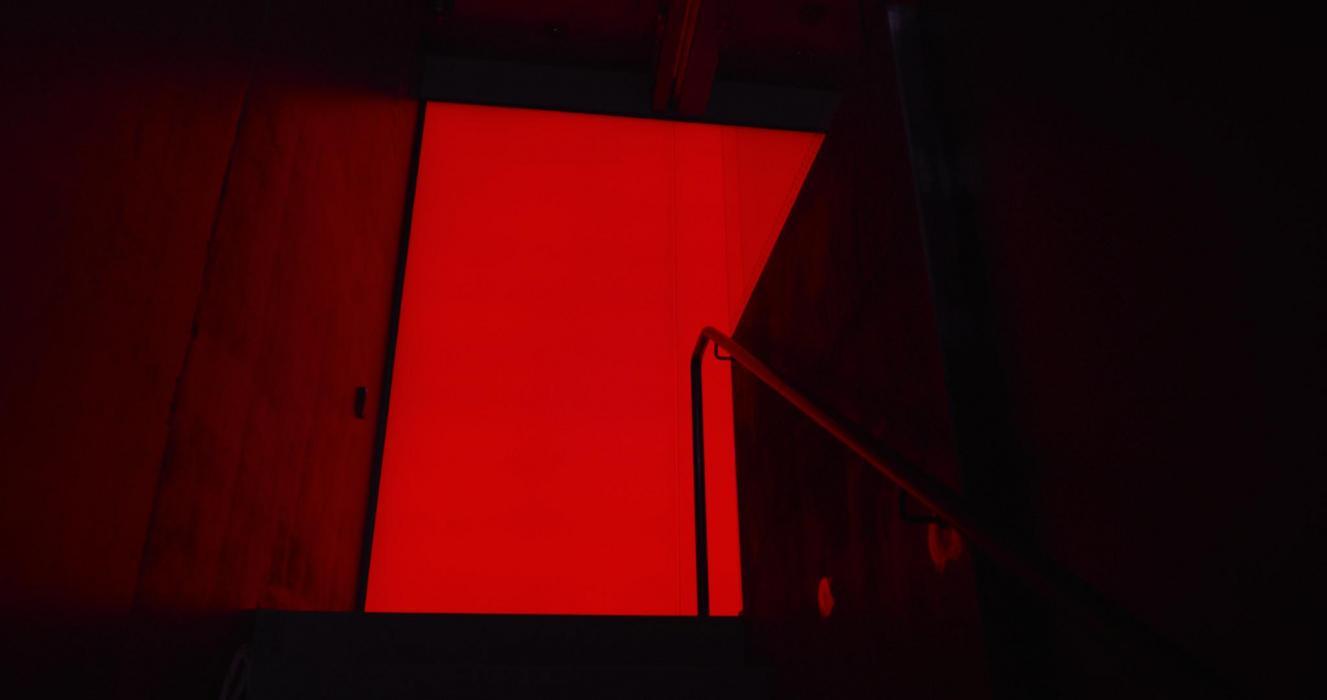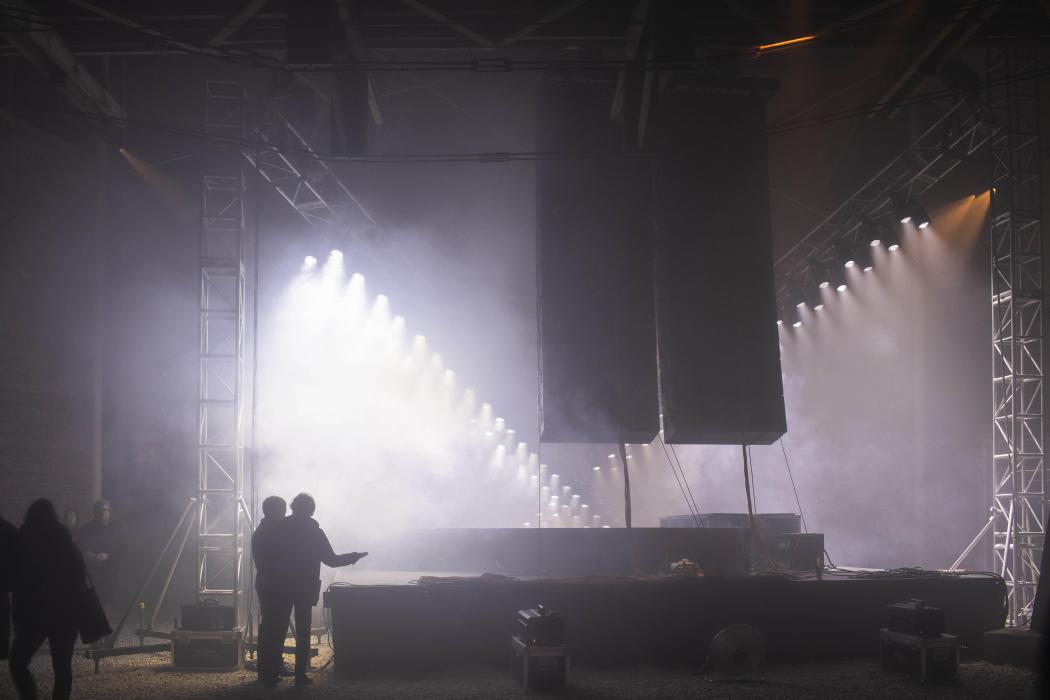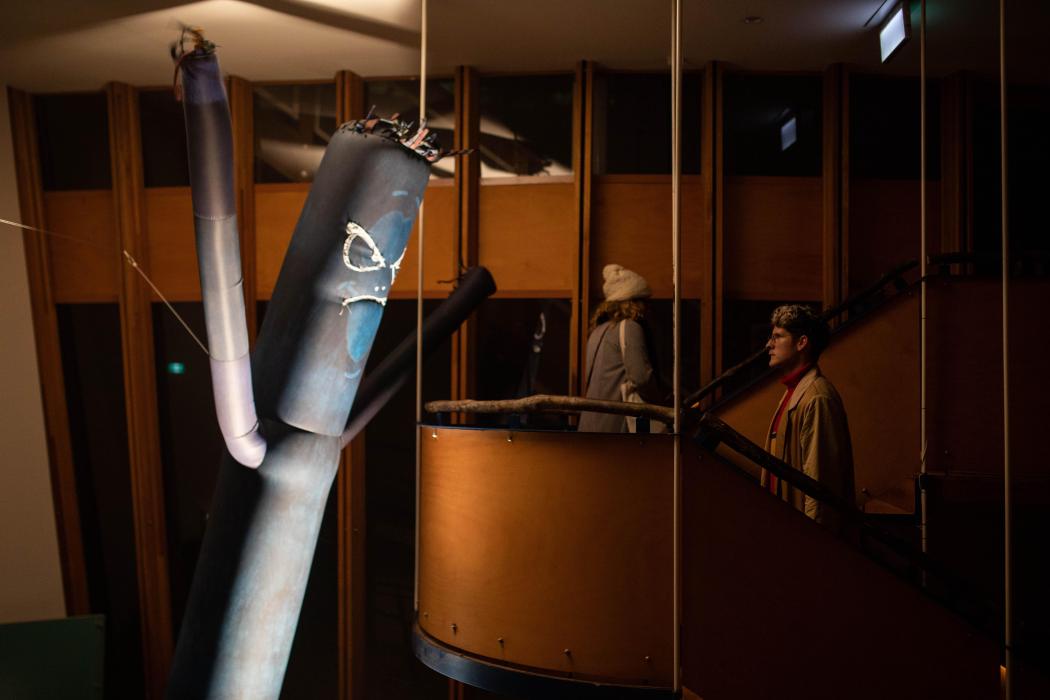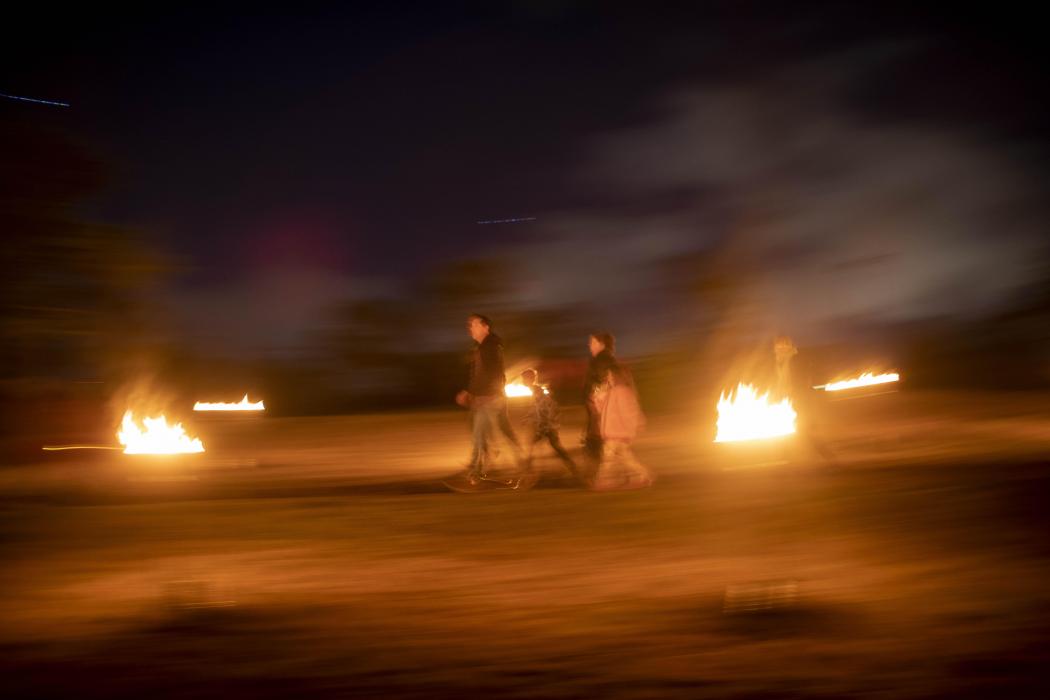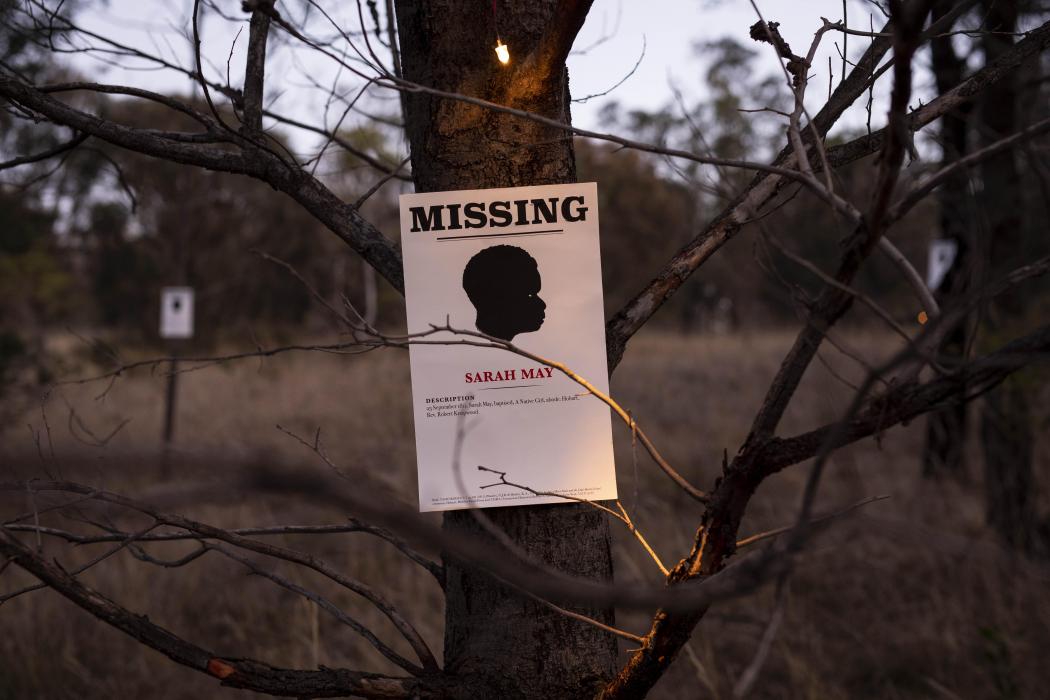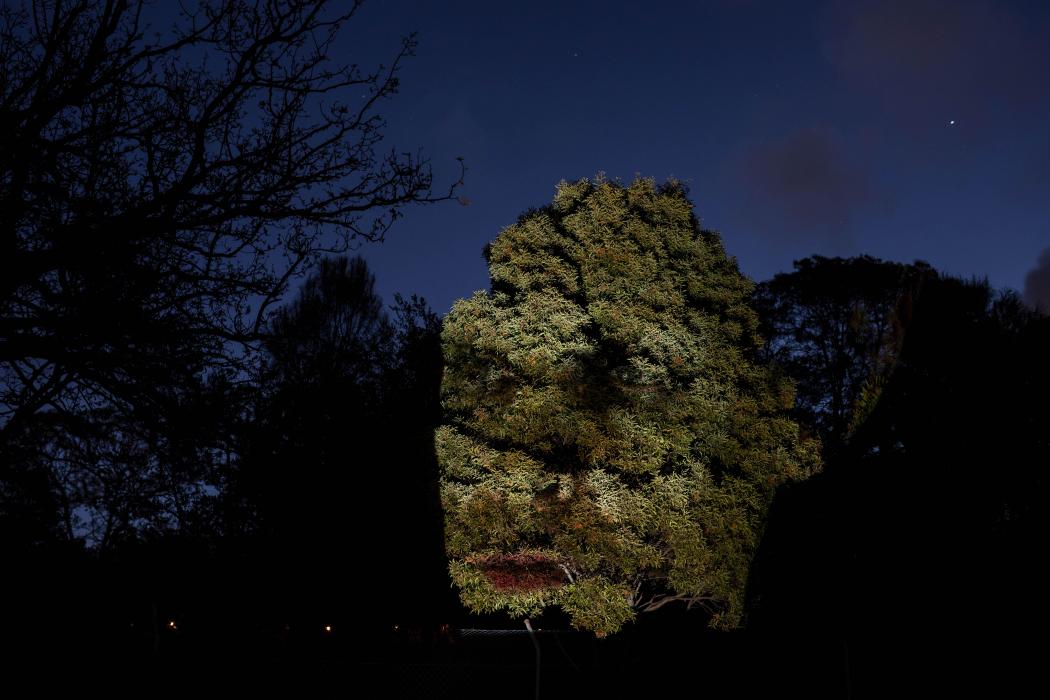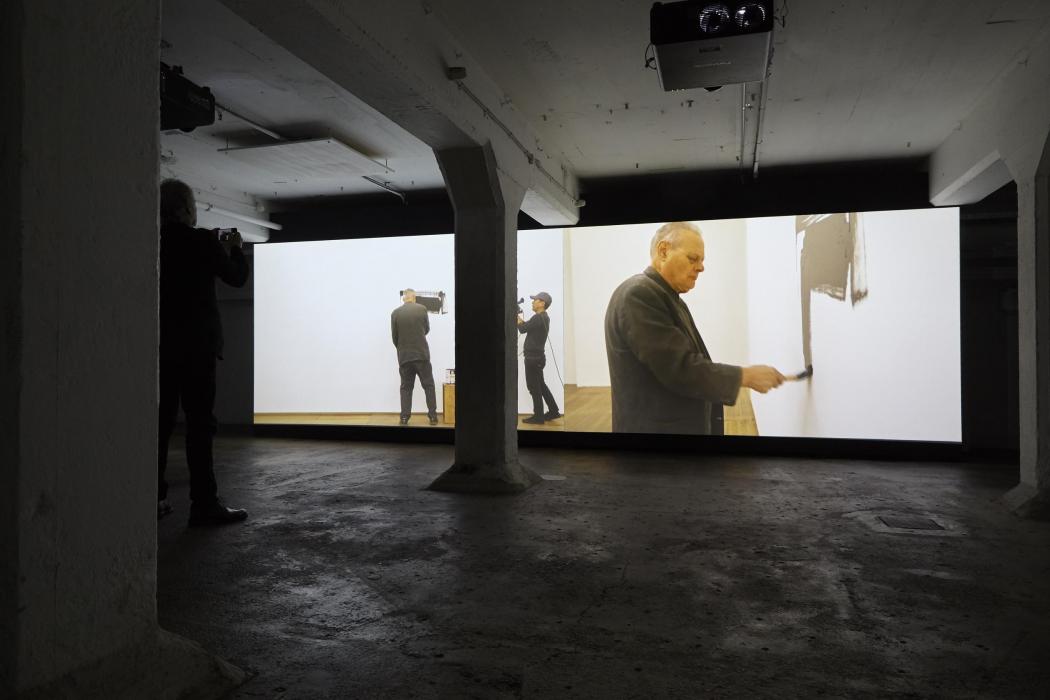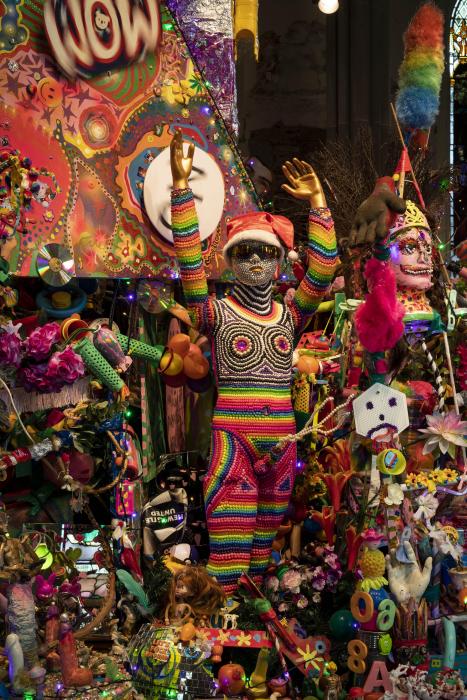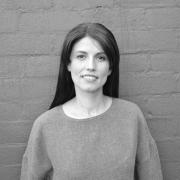Into the Trees
‘Midway upon the journey of our life I found myself within a forest dark. For the straightforward pathway had been lost.’
-Dante, The Divine Comedy.
In Michelino’s fresco La commedia illumina Firenze at Santa Maria del Fiore in Florence, Dante holds a copy of the Divine Comedy as he stands by the entrance to Hell. Behind him are the seven terraces of Mount Purgatory and the spheres of Heaven above. Far from the cobblestone streets of Florence, the seventh iteration of Hobart’s Dark Mofo takes its theme from the pages of Dante’s narrative poem, the Divine Comedy: ‘I found myself within a forest dark.’
As audiences meander ‘down the path of a metaphorical forest’ navigating dark tunnels, blazing fires, and red-stained light, the festival’s ‘Dark Triangle’ of organisers invite crowds to stray from the path into the trees. The journey begins at Hobart’s airport. A neon red sign on the terminal façade that reads ‘Into the Trees’ greets incoming passengers as they pass through the gates into the terminal. The whole city is in for the ride. Red beacons of light illuminate hotel stairwells, shop windows, bridges, and bars. The controversial inverted giant red crosses that adorned the wharf last year are this year erected the ‘right’ way up. Meanwhile, Dark Mofo’s red cross logo mutates into four intertwined trees. Within a forest dark, we are led into the trees as the path is never straightforward.
You cannot exclude the journey from the art. For example, the visit to MONA is made on a plush private camouflage-decal ferry, up the ninety-nine stairs to the entrance of the museum, and then three levels underground in a glass-dome elevator. Walking around the gallery, visitors navigate the vast network of dark tunnels and stairways. Attempting to see some of the more recent installations such as James Turrell, Alfredo Jarr, and Oliver Beer requires the continuous monitoring of the ‘O’ device’s ‘virtual queue’ to secure a viewing.
Siloam, the new 27-million dollar subterranean network of tunnels and gallery spaces, hosts four new works by Jaar, Ai Wei Wei, Beer, and Christopher Townend. Jarr’s epic forty-minute three-part installation The Divine Comedy invites a group of ten participants to be led into three simulations of the afterlife. The first of these, Inferno, represents the nine circles of hell. Participants are strapped to harnesses and led on to a raised platform positioned above a pool of water. The waters underfoot begin to simmer into a whirlpool. As the ceiling above slowly descends, heat radiates from a grid of ultraviolet panels arranged on the ceiling. The second pavilion, Purgatory, shows a mesmerising video featuring American art pioneer Joan Jonas. The black and white film shows a sequence of actions performed Jonas with white roses that eventually wither and die. The last space, Paradiso, is a smoke-infused anechoic chamber. The first two pavilions are at-once enthralling and introspective. However, the low hum of the climate control in the ‘soundproof’ chamber distracts from the extraordinary experience of the third.
In antithesis to the dark tunnels and gallery spaces of MONA, Turrell offers an atmospheric experience of pure light. In Event Horizon, the smoke, strobe, and oscillating light invite visitors to experience the Ganzfeld effect—a phenomenon of perception through exposure to an unstructured, uniform stimulation field. Starved of a depth of field, participants linger in the in-between states of light and dark, the known and unknown.
After a long day queuing and checking the O, I head back into the city in time for the 6pm session of the group exhibition A Forest. On Melville Street in Hobart, the exhibition was installed throughout the dark, cold, and disused offices of the old Forestry Tasmania building. While taking its title from Dante, A Forest was also a comment on Tasmania’s problematic logging industry in the aftermath of the recent devastating bushfires.
Upon entry, Marco Fusinato’s Aetheric Plexus (The Field)—comprising of a huge stage rig positioned in a cross formation, a wall of stadium speakers, amps, smoke machine—is installed beneath the giant glass-domed entrance. White pebbles crunch underfoot while a stagnant hum resonates from the plethora of stage equipment. Suddenly, the lights flash and the wall of speakers sounds a spontaneous roar. For those familiar with Fusinato’s work, the noise is less confronting—firstly, because you are instructed to wear earplugs upon entry, and secondly, you know what to expect. But to unsuspecting visitors, the spontaneous roar is jarring. As visitors make their way up to the second level, Steven Rhall’s Air Dancer as Black Body—a large black custom made inflatable air dancer—hovers and looms by a set of stairs. An industrial fan bursts the air dancer into action, frightening visitors as they pass.
Cassils’s video Tiresias shows the artist pressing their bare torso against a large cube of ice that slowly dissolves with their body heat. On the ground floor, Cassils's work Inextinguishable Fire is a fourteen-minute slow motion frame of the artist being set alight and extinguished. Cassils tests the human body’s adaption and endurance under extremes of heat and cold. Before being lit ablaze, the artist was chilled to the core using a freezing solution. The danger of the fire stunt is not that the fire will touch the skin, but that intense sweating will boil the skin underneath the protective garments.
A highlight was Universal Estate, a performance by Antony Hamilton Projects and Chunky Move. A rectangular space, lit by beige florescent lighting, became a stage for two dancers to enact a series of movements. Navigating the environment, they climb grey rectangular boxes, carry computer screens and other strange technological objects, while they gasp, rattle, and contort their bodies. Standing in the darkness and peering into the beige-tinged enclosure, it appears as though we are watching their jerks and movements unfold on a tv screen—as both a nonsensical and profound commentary on our relationship with technology.
A fifteen-minute walk east of the city was Dark Path. Embarking on the two-kilometre journey from the Royal Hobart Regatta grounds, the stifling fumes from the rows of kerosene lamps along the path are suffocating. During the, what seemed to be, never-ending walk, I momentarily flash-back to Jarr’s installation. Were we embarking on a journey through Dante’s darkness? Or were we caught in the plight of following the crowd on masse? Relief emerged when The Queen Victoria Powder Magazine building appeared out of the haze. Meandering off the main path into the bushland to the right, I stumble upon the installation Missing or Dead by Trawlwoolway artist Julie Gough. The memorial included a series of black and white “missing” or “dead” notices commemorating the 185 aboriginal children stolen or lost during the early colonial years. Pinned to trees in bushland and lit by a single lightbulb, each notice included everything that Gough could find out about the missing child. To read them required you to stagger through the bushes in the dark, often tripping and fumbling through the branches.
Attempting to navigate a map of Dark Path in the dark, feelings of agitation and impatience grew stronger. Entering the iron gates of the Botanical Gardens, the intermittent flashing lights and voices of multi-media pioneer Tony Oursler’s Beyond the Spectrum were a welcomed reprieve. The temperature instantly drops as you walk into the pitch dark garden. The voices of the thirty talking lights emanate from the trees and iridescent globes that intermittently light up the garden. A park bench under a heady, fragrant luculia pinceana tree provides refuge from the enduring walk. Within its branches, a globe lights up while a speaker installed at the base of the plant sounds a whispering female voice reciting phrases that comment on technology and artificial intelligence: ‘The human mind has extrasensory powers. Your thoughts can be recorded.’ Continuing down the path, the voices repeat, and layer in and out of sync.
The sound of what seems to be a large drone loiters in the distance. Following the menacing sound behind the trees reveals a Tesla Coil electrical display by American researcher Greg Leyh. The coil produces a sinister hum that gradually intensifies as the charge of the coil conducts into the air around it as luminescent bolts of ominous electricity. If Leyh’s experiment reaffirms Tesla’s suppressed theory that electricity can be generated through electromagnetics, it poses questions about the reliance on fossil fuels since the early 19th century.
Despite two days not being sufficient to experience the festivals entire program, a cluster of works in Hobart’s CBD were easy to tick off in an afternoon. Dark Mofo veteran Mike Parr created a homage toward Malevich’s black square in the Old Mercury Building. The two-part work Towards a Black Square includes a two-channel video projection installation in ‘The Tunnel’ in the basement of the building and the finished work on the ground floor. The video shows Parr with his eyes shut, attempting to paint a series of black squares using only one hand. In what was originally a seven-hour performance and condensed into a short video, Parr used his sense of touch to navigate the white walls of the room. Dipping a large brush into a can of Taubmans black household paint, he applied the black paint to the white wall first horizontally and then vertically. Using his sense of touch, the wetness of the paint strokes guided him in completing the large square.
Around the corner in the Old Blood Bank building, Hayden Fowler’s The Long Forgetting—included in the ¢ompo$t exhibition—also explores the senses. In a sequence of enactments that plays out over a three-channel projection, the centre screen shows a surreal blue-bodied character crouching by a naked male body that he covers in blue paint. Like Parr, the character is sightless, relying on his sense of touch to gradually and cautiously apply the paint.
Nearby at the Black Temple Gallery was Paul Yore’s mind-numbing shrine to pop culture icons like Justin Bieber, Dolly Parton, and the Kardashians. The assemblage was constructed from thousands of objects: brightly coloured toys, blow-up dolls, fairy lights, papier-mâché figures, artificial flowers, crochet blankets, inflatable penises, videos, music, hand-drawn posters, and collages from magazine and newspaper cut-outs. A hypnotic clamour emanated from the large assemblage of technicolour objects and pop culture paraphernalia. Amongst the cacophony of sounds produced by the toys, videos, and mechanised objects, a sped-up recording of Michael Jackson’s Heal the World delights the funfair of madness.
From what began as an initiative to boost visitation to MONA during winter, Dark Mofo has developed into a successful and ingeniously curated program. It is anything but boring and monotonous. The kernel of Dark Mofo is the program’s eagerness to probe both creativity and the audience’s experience. The path into the trees is not straightforward. It is confronting and wondrously full of dark nuance.

